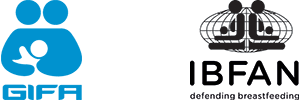
As we celebrate World Breastfeeding Week (WBW) in Switzerland, it is an opportune moment to highlight the economic benefits of breastfeeding. The “Cost Analysis” tool developed by Dr. Dylan Walters and the organization Alive and Thrive was created in 2017 and updated in 2022. It calculates the cost of not breastfeeding and shows the overall impact of the benefits of breastfeeding in a transparent and quantified way.
Overall, the loss caused by not breastfeeding or not following WHO breastfeeding recommendations is calculated by this new tool and amounts to
- $574 billion in annual losses,
- 423,000 premature deaths
- 92,000 mothers dying prematurely
- 4.58 million cases of childhood obesity
Increased support for breastfeeding at the national level could save the global economy $1.5 billion per day Aug 01 2022, Alive and Thrive.
Insufficient protection, promotion, and support for breastfeeding by governments costs countries around the world nearly $575 billion annually in economic and human capital losses, according to the latest data from the Cost of Not Breastfeeding Tool, developed by Nutrition International and Alive & Thrive. These losses, which represent an average of 0.7% of a nation’s gross national income, are the combined result of increased infant and maternal mortality, cognitive losses, and additional healthcare costs.
“Breastfeeding is the primary component of a healthy food system and one of the best ways to give a child a good start in life,” said Joel Spicer, president and CEO of Nutrition International. “But women around the world are not receiving the support, resources, and protection they need to start breastfeeding early and continue for the recommended duration. Governments must make breastfeeding a public policy priority, and with the Cost of Not Breastfeeding tool, policymakers can see the concrete benefits of doing so.”
By investing in breastfeeding support and promotion programs, countries will save hundreds of thousands of lives and billions of dollars in economic losses.
The Cost of Not Breastfeeding tool, first published in 2019, has been redesigned in 2022 with a new user-friendly dashboard featuring data for more than 160 countries and, in addition to mortality rates and healthcare costs, offers new calculations for the impact of not breastfeeding on childhood obesity, IQ losses, and education. The “What If?” option also allows users to test different scenarios, for example comparing the impact of achieving the World Health Assembly’s nutritional goal (50% exclusive breastfeeding) or even more ambitious national goals.
The “Cost of Not Breastfeeding” tool calculates that more than 515,000 lives could be saved each year if breastfeeding were protected, promoted, and supported in accordance with World Health Organization recommendations, including initiation of breastfeeding within one hour of birth, exclusive breastfeeding for the first six months, and continued breastfeeding alongside complementary foods from six months to two years and beyond. Breastfeeding is a baby’s first vaccine, strengthening their immune system and protecting them from childhood illnesses such as diarrhea and pneumonia, and reducing the risk of obesity. Breastfeeding also benefits mothers by protecting them against breast and ovarian cancer, as well as type 2 diabetes.
At the population level, insufficient rates of exclusive and continued breastfeeding can lead to increased health costs in the long term, as well as reduced cognitive abilities in children, which impacts their education and future earning potential. For families, not breastfeeding also increases the cost of living, as household income is redirected to the purchase of formula or other breast milk substitutes. The Global Breastfeeding Collective recommends seven policy actions that national governments can implement to support and promote breastfeeding, including enacting paid leave and breastfeeding practices in the workplace, strengthening links between health facilities and communities, and implementing the International Code of Marketing of Breast-milk Substitutes.
“Increasing breastfeeding rates through supportive actions and policies can help save the lives of mothers and children and protect economies from avoidable losses,” said Sandra Remancus, director of Alive & Thrive. “We know what can be done to help, and with the Cost of Not Breastfeeding tool, we can calculate the impact of success. “
The Cost of Not Breastfeeding tool was first developed between 2017 and 2019 by Dr. Dylan Walters and Alive & Thrive. In 2022, Nutrition International updated and developed the second version of the tool in partnership with Alive & Thrive and Limestone Analytics, with funding from the Government of Canada.
#Breastfeeding, #nutrition, #maternal and child health, #economic evaluation #health costs #health expenditures #morbidity #mortality
